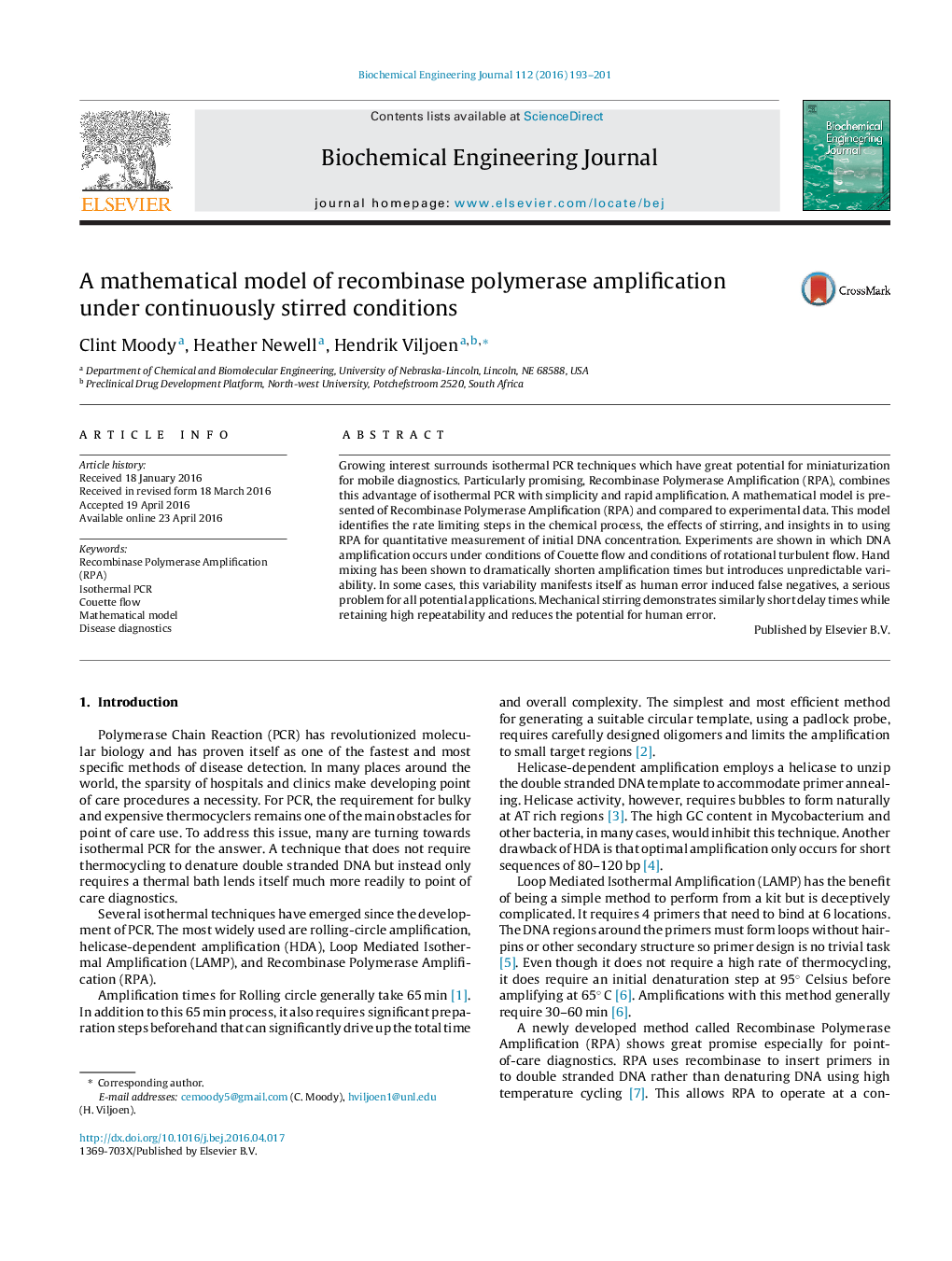| Article ID | Journal | Published Year | Pages | File Type |
|---|---|---|---|---|
| 2723 | Biochemical Engineering Journal | 2016 | 9 Pages |
•The first mathematical model of RPA is presented.•The model gives insights useful for estimating initial template copy number using RPA.•A simple automated stirring method compatible with existing technology is proposed.•Mechanical stirring increases reaction rates as well as consistency and reliability.
Growing interest surrounds isothermal PCR techniques which have great potential for miniaturization for mobile diagnostics. Particularly promising, Recombinase Polymerase Amplification (RPA), combines this advantage of isothermal PCR with simplicity and rapid amplification. A mathematical model is presented of Recombinase Polymerase Amplification (RPA) and compared to experimental data. This model identifies the rate limiting steps in the chemical process, the effects of stirring, and insights in to using RPA for quantitative measurement of initial DNA concentration. Experiments are shown in which DNA amplification occurs under conditions of Couette flow and conditions of rotational turbulent flow. Hand mixing has been shown to dramatically shorten amplification times but introduces unpredictable variability. In some cases, this variability manifests itself as human error induced false negatives, a serious problem for all potential applications. Mechanical stirring demonstrates similarly short delay times while retaining high repeatability and reduces the potential for human error.
